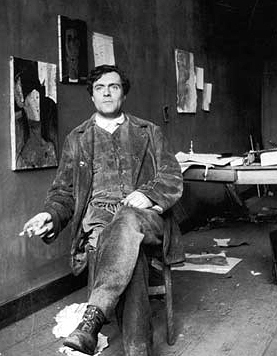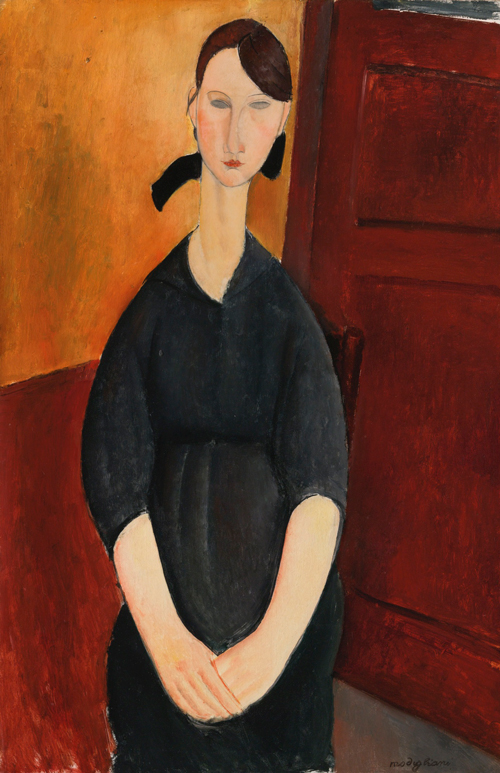
Amedeo Clemente Modigliani (1885-1920) led a sketchy, Bohemian existence in Paris fueled by absinthe and hashish that propelled him deeply into strange, antisocial behavior. While his output was impressive, so was his propensity to give his works away in exchange for everything from rent to food to sex. Even though he had a dealer, his own drunken, slipshod approach to inventorying his works and reliably maintaining a steady residence contributed to the current problems with authentication.
He had only one solo exhibition, in Paris in 1917, and that was closed by the police on the first day for displaying art deemed “obscene.” Nu couche (red nude), one of the landmark works from the exhibition, realized $170,405,000 at a 2015 Christie’s auction, making it one of the most expensive paintings ever sold (Christie’s, 2015.)
Modigliani is known for portraits and nudes and was obsessed with painting the wife of his art dealer, Anna (Hanka) Zabrowska. One of the striking characteristics of the nudes is the comfort with which these models appear in their respective poses. It is believed that Modigliani, described by a friend as “a young God,” was a prolific womanizer and lover, often gifting his conquests with his artworks, thereby creating even more murky, undocumented trails and potentially more authentic works that have never been catalogued.
The starving artist was also known for trading many of his works for needs and desires. One landlord repaired old mattresses with pieces of canvas stripped from Modigliani’s artwork (Stewart, 2005). Because he treated his paintings like currency, many sales of his paintings are not well documented or documented at all. Of course, paintings sold through one of his dealers carry a degree of credibility. There is theoretically a treasure trove of works that may have been passed through generations of family members or destroyed by jealous husbands!

Kenneth Wayne, one of the world’s leading experts on Modigliani, met with Paulette Jourdain in Paris 73 years after she modeled for the Italian artist. Modigliani’s subdued 1919 painting, “Portrait of Paulette Jourdain,” portrays a modest young woman with clasped hands. This meeting was only part of Wayne’s broader quest to build up the provenance of the artist’s unacknowledged works and, ironically, solve the mystery that Modigliani himself grappled with during his career: exposing the authenticity under the mask.
From his muted portraits to his most sensual nudes, he strove to re-imagine human authenticity. In the final analysis, the authenticity of his own work remains the most elusive mystery.
Taken from “Modigliani: New Authentication Projects May Explode Global Collecting Market” by Daniel J. Voelker
